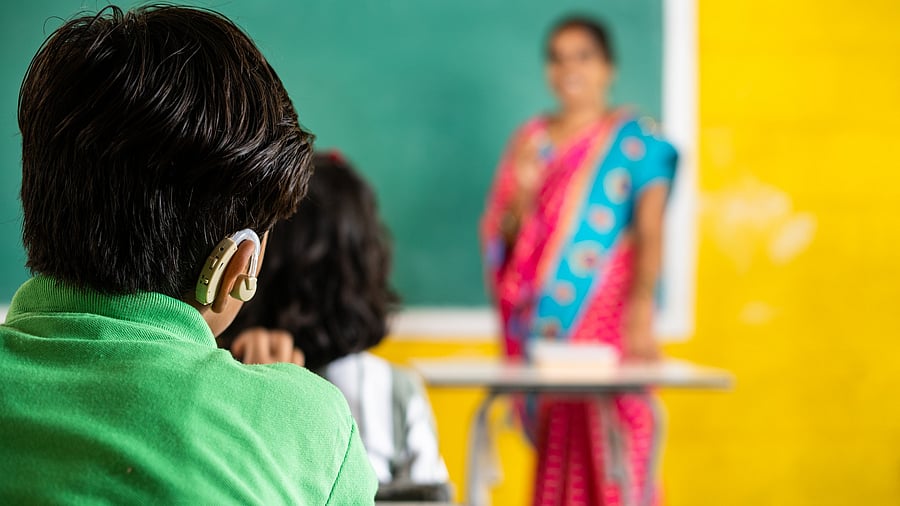
Representational image only.
Credit: iStock
A Netflix series, Atypical, narrates the story of Sam Gardener as he tackles the ups and downs of college life with the support of disability services—offering a raw and heartfelt glimpse into the experiences of students with disabilities. Being on the autism spectrum, Sam traverses the confusing and complex realities of academic and social life with the help of his parents, friends and accommodation provided by his university. Like Sam, many students with disabilities navigate the infrastructural challenges of the university campuses—and the pressures to meet their academic responsibilities. Without adequate protections, they may be marginalised, ostracised and even discriminated against from numerous fronts—potentially creating an environment that may obstruct their academic and professional pursuits.
Perhaps recognising these barriers faced by the students with disabilities, the Indian regulators took a more inclusive approach in 2012—describing discrimination as ‘distinction, exclusion, limitation or preference which has the purpose or effect of nullifying or impairing equality of treatment in education and in particular i) of depriving a student or a group of students on the basis of caste, creed, religion, language, ethnicity, gender, disability or access to education of any type or at any level’. However, the newly proposed Draft University Grants Commission (Promotion of Equity in Higher Education Institutions) Regulations, 2025, seek to reduce this protection of people with disabilities (PwDs) against discrimination in Higher Education Institutions (HEI). In the proposed draft of regulations, the definition of discrimination limits the meaning of the word ‘discrimination’ to connote “any unfair, differential, or biased treatment or any such act against any stakeholder on the grounds only of religion, race, caste, sex, place of birth, or any of them.” Further, instead of giving regulatory protection to the students, the draft guidelines simply mandate that HEIs ‘shall’ take appropriate protective and preventive measures to eliminate discrimination against stakeholders and safeguard the interests of the stakeholders without any prejudice to their caste, creed, religion, language, ethnicity, gender, and disability.
By proposing to nearly exclude disability and the ensuing discrimination from its skeleton, the regulations weaken the principles of inclusion and diversity, thereby provoking gaps between policy drafting and ground realities. Essentially, there are two factors that have contributed to the erosion of these principles. This draft proposal, if implemented, threatens to undermine the progress made by people with disabilities (PwDs) for two reasons.
Firstly, India has arguably made significant strides in advancing the rights of the PwDs in various facets of personal and social life. Parallelly, a gamut of policies enacted on disability inclusion have been crucial in fostering greater accessibility and equity across education, employment and public life. Notably, the Sugamya Bharat Abhiyan (Accessible India Campaign) and the National Action Plan for Skill Development of Persons with Disabilities have been instrumental in improving inclusivity for PwDs. In the given scheme of things, the Rights of Persons with Disabilities Act, 2016, in consonance with India’s obligation under the United Nations Convention on Rights of Persons with Disabilities (UNCRPD), has broadened the scope of ‘disability’ and has marked a shift to a more rights-based approach. The draft regulations threaten to endanger the progress made so far to secure the rights for the PwDs.
Secondly, the Supreme Court’s jurisprudence has evolved to expand the envelope of disability by including discourses on dignity, accessibility, autonomy, and empowerment, among other things—highlighting the necessity of adopting a substantive approach toward equality. The draft guidelines, as highlighted above, use the word ‘shall’. The use of ‘shall’ here appears to imply a non-mandatory framework which the Rajive Raturi judgement sought resolutely to rectify. This provision risks undermining the directions of the Supreme Court in the judgement by introducing inconsistencies in the legal principles governing the rights of PwDs.
It is pertinent to highlight that the draft regulations, which draw their mandate from the National Education Policy, 2020 (NEP), also end up contradicting the spirit in which NEP was drafted. The NEP had placed great emphasis on the provision of special educators, support for teachers teaching students with disabilities and equipping students with disabilities with an inclusive environment in line with the RPwD Act. To remedy the two points mentioned, it is vital that persons with disabilities are explicitly included within the “objectives” clause of the regulations, the preamble, and the definition of ‘discrimination’ under the draft which has been opened for suggestions and comments. Furthermore, to ensure meaningful representation and participation, the regulations must mandate the inclusion of at least one member with a disability in the equity committee responsible for overseeing compliance and implementation.
(The writers teach law at the Jindal Global Law School, OP Jindal Global
University)